-
Car Reviews
- Car News
-
Car Comparisons
Latest comparisons
- Chasing Deals
Mazda are on the cusp of introducing a fourth SUV model to their Australian range in a move to bolster their Australian sales, which remain at a steady number two position in the local market despite a brand-wide performance that is down 2.3% on this time last year.
Mazda Australia managing director Vinesh Bhindi highlighted to Australian media at the local launch of the updated 2018 Mazda CX-5 that SUV volumes continued to grow and indicated that this is where Mazda’s focus will lie in future. “The Mazda range is heavily bolstered with strong offerings [across] SUV segments”, noting that segment-wide medium SUV sales are up 16.4% in 2018, while small SUVs are up a substantial 28.6%.
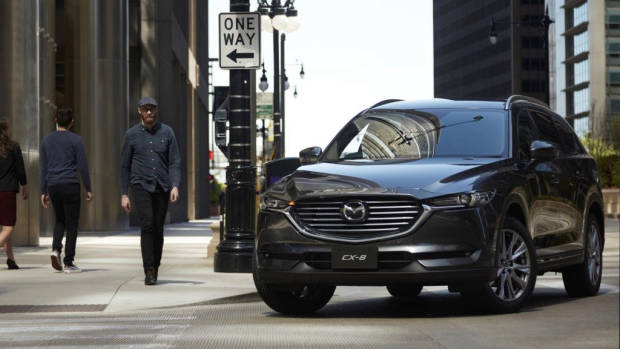
Mazda’s new CX-8 SUV, launching later this year.
While overall Mazda sales have receded slightly, the midsize CX-5 that launched in third-generation form a year ago is delivering decent results, up 10.6% on this time last year. The CX-5 has remained the top seller among medium SUVs, finding 6,604 homes so far in 2018. In order to further assist the chances of the CX-5, which Mr Bhindi labelled “a clear winner”, Mazda will this month apply the first set of rolling updates to the car in this generation, with mechanical revisions to the three available engines, plus some minor technological changes.
The changes will help the CX-5 achieve “a baseline goal of approximately 2,000 sales per month”, Mazda Australia marketing director Alastair Doak told Chasing Cars. If the CX-5 meets Mr Doak’s conservative goal it will fall just shy of the vehicle’s final 2017 tally of 25,831 deliveries, assisted by runout deals on the superceded second-generation model.
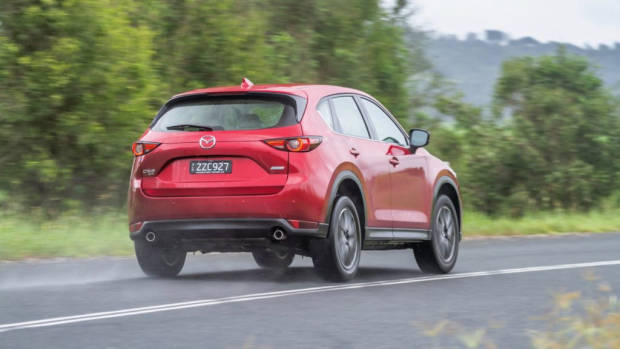
The CX-5’s dominant sales position amongst medium SUVs is shared by Mazda’s small SUV, the CX-3, which is number one in its own class. The CX-3 has moved 4,500 units so far this year, which is steady over last year. Also remaining steady over its 2017 result is the Japanese brand’s large SUV, the CX-9, which has found 2,282 buyers thus far in 2018. The CX-9, though, is number four for sales in its class, behind Toyota’s Prado and Kluger and the Subaru Outback.
A fourth amigo will join Mazda’s SUV range in spring this year in the form of the 2018 Mazda CX-8, a three-row seven-seater which will sit in between the CX-5 and the CX-9 in terms of size. “The CX-8 is 12 centimetres shorter than the CX-9 and the same width of the CX-5 – it’s a little bigger than the current Hyundai Santa Fe”, Mr Doak said. “We’re excited about the CX-8 – we always wanted it”, Doak added.
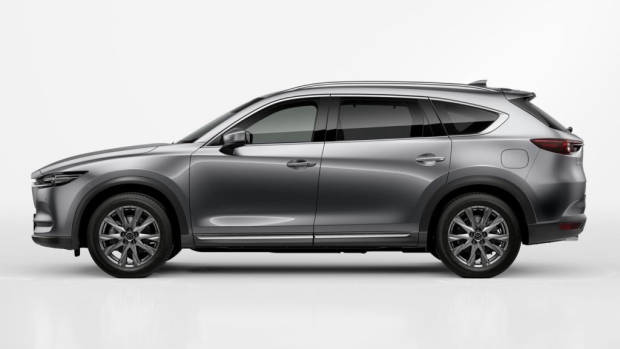
The CX-8 is 12cm shorter than a CX-9 and the same width as a CX-5.
The CX-8, which is exclusively fitted with a 2.2-litre twin-turbocharged diesel engine, started life as a Japan-only model designed as a replacement for Mazda’s MPV people-mover. Hacing successfully lobbied HQ in Japan to receive the CX-8, “Australia is the only big market to get both it and the CX-9”, Mr Doak said, noting that some small markets like New Zealand will also sell both seven-seaters.
Because the CX-8 was not a global product from its inception, Mr Doak told Chasing Cars that Australia should not expect a similar range walk to the CX-9, which offers four models badged Sport, Touring, GT and Azami. The CX-8 range will likely be smaller, and with Mazda Australia executives making the point that 40% of CX-9 buyers opt for a higher-end model – the GT or Azami – while less than 10% of sales are for the entry-level Sport, we would be unsurprised if there is no ‘base’ model CX-8.
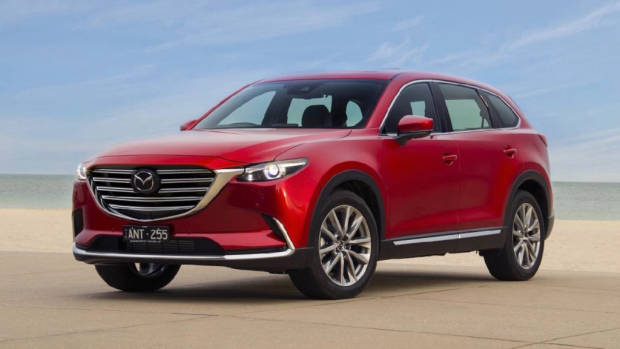
The larger CX-9, which is a big car at 5.1 metres in length and weighing in at about 1,900 kilograms in all-wheel-drive form, is powered by a 2.5-litre turbocharged petrol four-cylinder engine producing 170kW/420Nm. There has never been a diesel offered on the CX-9, and asked whether the 2.2-litre twin-turbo diesel that will motivate the CX-8 was considered the CX-9, Mr Doak said there were “weight and emissions issues”, and told Chasing Cars “you would need a bigger diesel for the CX-9”.
Mr Bhindi made the point to assembled media that while SUVs were an important focus for Mazda, passenger cars would continue to receive adequate attention and pointed to the forthcoming launch of the facelifted 2018 Mazda 6. The midsize 6 will continue to be available in sedan and station wagon form and receives light aesthetic updates outside and a substantially upgraded interior.
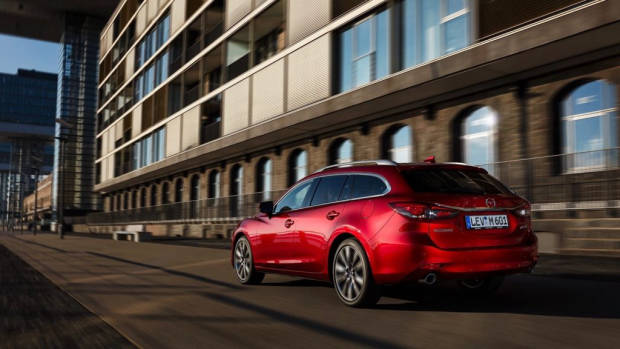
In a major mechanical upgrade, the high trims of the updated Mazda 6 will be fitted with the CX-9’s turbocharged 170kW/420Nm petrol engine, while the existing 138kW/250Nm 2.5-litre naturally aspirated petrol will become the base engine on lower specification cars. The 2.2-litre twin-turbocharged diesel will continue to be optional on the 6, making stronger power and torque outputs of 140kW/450Nm.
Mr Doak confirmed that the 2.5-litre turbocharged petrol will be available on both the 6 sedan and station wagon. The turbo petrol had previously been confirmed for the sedan in the American market, but the question of whether the Australian market would also receive the boosted petrol for the station wagon was previously unresolved.
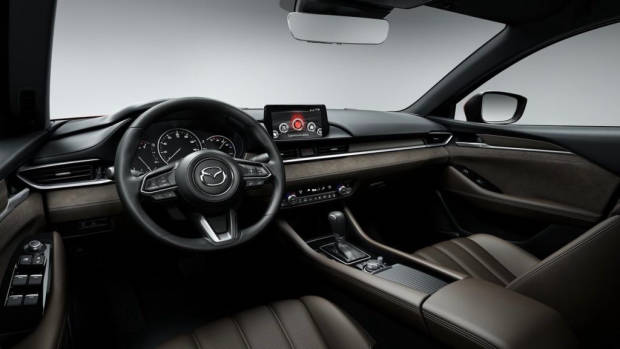
The facelifted Mazda 6’s new interior.
You’ll be able to read more about the updated 2018 Mazda CX-5 range this week and the facelifted 2018 Mazda 6 range at the end of the month.
Latest news
About Chasing cars
Chasing Cars reviews are 100% independent.
Because we are powered by Budget Direct Insurance, we don’t receive advertising or sales revenue from car manufacturers.
We’re truly independent – giving you Australia’s best car reviews.